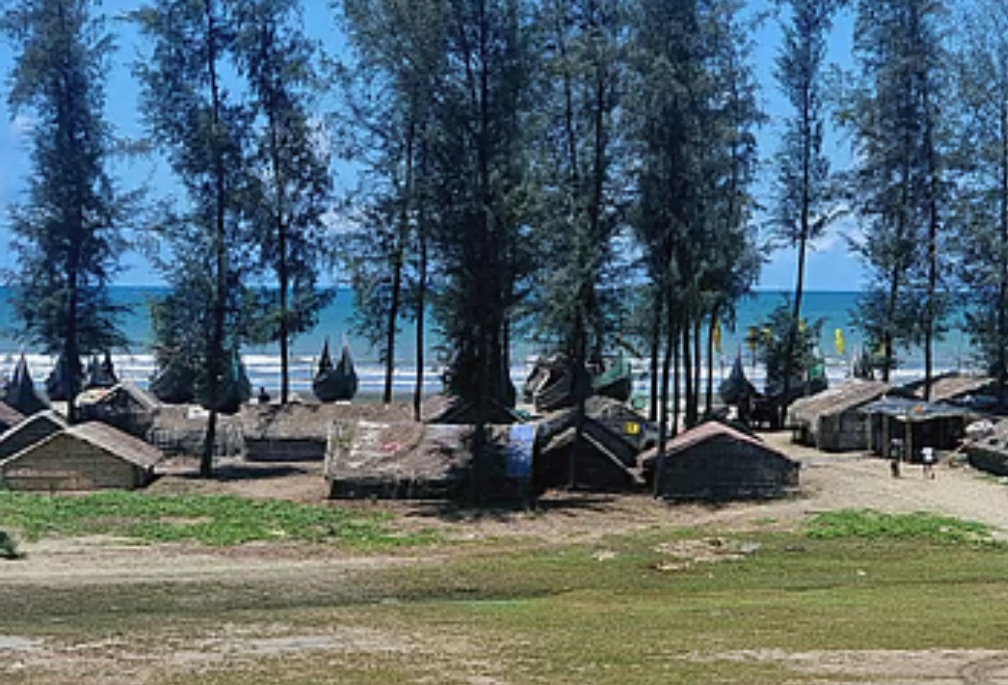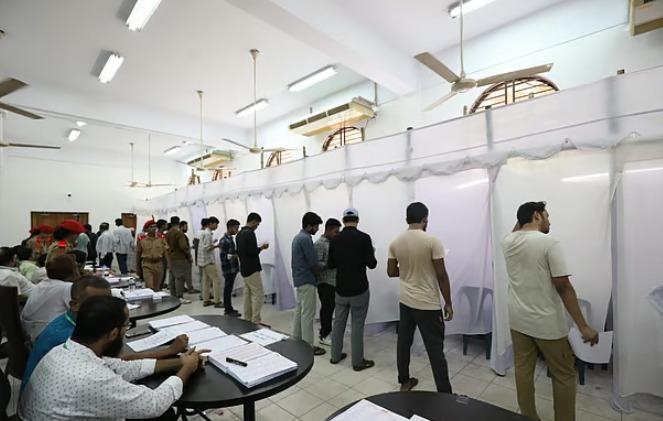Desk Report,
Illegal structures are being demolished by demolishing the Jhaubagan on Cox’s Bazar beach, says the Forest Department
The trees of the grove created on the beach on the west Illegal structures side of the Cox’s Bazar-Teknaf Marine Drive road have been cut down to build houses and shops. Baharchhara area of Teknaf. Recently photographed by Prothom Alo
Rows of groves can be seen at least 60 kilometers west of the Cox’s Bazar-Teknaf Marine Drive. Although the government spent crores of taka to create groves in the interest of protecting the coast including the Marine Drive, the trees have been uprooted and numerous houses, shops and other infrastructure have been built there.
Illegal structures are being demolished by demolishing the Jhaubagan on Cox’s Bazar beach, says the Forest Department
According to the Coastal Forest Department, after the cyclone and tidal surge of 1991, at least one million zhau trees were planted in 525 hectares of coastal land along the beaches of Hadurchhara, Khurermukh in Sabrang Union of Teknaf, Maheshkhaliapara, Lambari, Tulatli, Rajarchhara in Teknaf Sadar, Noakhali, Kachhpia, Baradeil, Mathabhanga, Shilkhali and Shamlapur in Baharchhara Union. In 2003, various voluntary organizations created another 320 hectares of zhau gardens a few kilometers from the beach. Currently, 70 percent of the trees in the forest area have been uprooted. There is no sign of zhau trees in a few kilometers of Sabrang, Maheshkhaliapara, Baradail, Puranpara. Follow

On the west side of the Cox’s Bazar-Teknaf Marine Drive road, houses and shops have been built by cutting down the trees of the zhau gardens created on the beach. Baharchhara area of Teknaf. Recently photographed by Prothom Alo
On the west side of the Cox’s Bazar-Teknaf Marine Drive, rows of zhau trees can be seen for at least 60 kilometers. Although the government has spent crores of taka to create zhau gardens in the interest of protecting the coast including the Marine Drive, many houses, shops and other infrastructure have been built there by uprooting the trees.
According to the Coastal Forest Department, after the cyclone and tidal surge of 1991, at least one million zhau trees were planted in 525 hectares of coastal land along the beaches of Hadurchhara, Khurermukh in Sabrang Union of Teknaf, Maheshkhaliapara, Lambari, Tulatli, Rajarchhara in Teknaf Sadar, Noakhali, Kachhpia, Baradail, Mathabhanga, Shilkhali and Shamlapur in Baharchhara Union. In 2003, various voluntary organizations created another 320 hectares of zhau gardens a few kilometers from the beach. Currently, 70 percent of the trees in the forest area have been uprooted. There is no sign of zhau trees in a few kilometers of Sabrang, Maheshkhaliapara, Baradail, and Puranpara.
There are allegations that illegal establishments built by cutting these zhau trees are used for drug consumption and sale. Human traffickers gather people in these structures inside the plantations before smuggling them to Malaysia by sea. Then they are put on trawlers. Many are cutting down the plantations and using them for housing, including building fishing boats. The Forest Department does not seem to be taking any action in this regard.
Deepak Sharma, president of the Cox’s Bazar Forest and Environment Conservation Council, an environmental organization, said that more than one million plantations were created on the 17-kilometer beach (west of Marine Drive) from Sabrang Point in Teknaf to Shaplapur in Baharchhara to Mankhali Bridge in Ukhia a few decades ago. 70 percent of the trees have been cut down in the last few years. Although at least three thousand houses have been built by cutting down the plantations, the Forest Department has not yet carried out an eviction drive or filed a single case.



